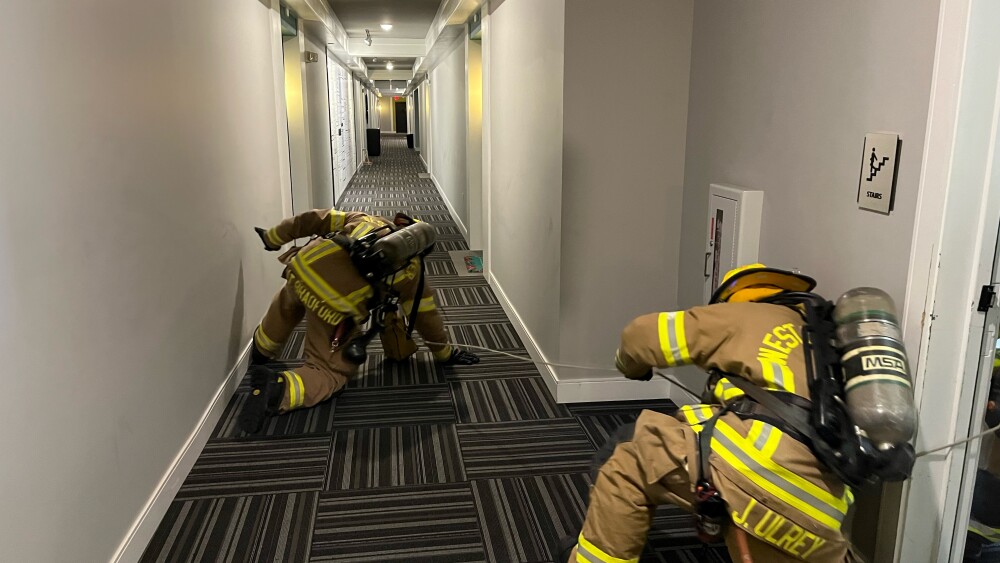“The culture of any organization is shaped by the worst behavior the leader is willing to tolerate.”
That quote – which I believe is entirely relevant for today’s fire service – comes from Steve Gruenert, one of the authors of “School Culture Rewired.”
We are in the middle of both a cultural shift and hiring crisis, creating a transition period with our personnel. As we lose members to retirements or other factors and replace those members with the newer, younger generation, we must remember that we have an obligation, a duty, to train and mentor these new firefighters or else we lose the very culture that we have attempted to build for so many years.
Revolving doors and burned-out members
Retention issues must be addressed by fire department leadership. Retirements are expected, but if we are losing personnel due to low wages, low morale, poor culture or poor leadership, then those issues must be addressed – and fixed! In today’s fire service, where lateral transfers are becoming increasingly more commonplace, if the organization is not living up to a member’s expectations, then that member will simply hop to the next department. Loyalty suffers, and the cycle continues. Yet that missing member must be replaced, and a new employee will be hired.
Therein lies the problem. As we lose members and replace them, it can become tiresome to have to train up and mentor the new hires. It becomes a cycle of rinse and repeat, and at some point, a lot of firefighters simply become burned out teaching the same things over and over, especially if it becomes clear that those members will simply move on in a matter of time.
While we can pitch ideas and negotiate for better conditions, at the end of the day, we have a duty to serve our citizens and our community. We must remember that despite the issues within our firehouse walls, we are the first and last line of defense for our community. As such, we have to train up our members – and do it right – because our community is counting on it.
What follows is a list of skills you can hammer home to new members to help ensure that your tactical culture will survive these transition periods.
Stretch the line
The proficiency of a fire company can be measured by many metrics, but one that cannot be disputed is the ability to accurately and timely place an attack line into service. Key questions to answer during training:
- How efficient is a new member at pulling the crosslay?
- How fast can they get the line into service?
- How well is your pump operator versed in water supply and engine operations?
- Do they know how to ensure that the first coupling and the nozzle sit next to each other on the ground so that the working length of hose is prepared to enter the building?
- Are firefighters versed in deploying and reloading all of the various lines carried on your trucks?
- Do they know the expectations of a nozzle firefighter?
Take your members outside and focus on stretching lines. Stretch to multiple entry points. Make sure that firefighters know how to bleed the line and prepare for entry. These are vital tasks that must be trained on, even if they seem repetitive.
Mask up for SCBA proficiency
Your air pack is your lifeline. It is disheartening to see how many new firefighters are unfamiliar or uncomfortable being on air. You can change that by ensuring that your new firefighters are comfortable and confident with their PPE. Key questions:
- How fast can your new firefighters mask up?
- Do you have a department or company standard?
- Do they know how to find their universal air connection for RIT operations, how to operate their PASS device, and how to follow their emergency procedures in dire situations?
- Can your firefighters call a mayday and operate their radios to give a “who, what, where, and air” size up? We have switched from LUNAR to who, what, where, and air as we have found that it is easier to recall and gives better information than trying to recall the LUNAR mnemonic during stressful events.
Work with your new firefighters who likely have never been shown how to mask-up efficiently so that they are prepared to perform when they are about to make entry into a fire.
Ground ladder deployment
How proficient are your new firefighters at throwing ladders? They’ve likely been taught how to deploy to a burn building, with zero obstructions, no wires and on concrete. Instead, they need to know how to raise a ladder to the Charlie side of a house, behind a fence, with toys and obstructions in the way.
Do they know the bedded length of your ground ladders and how far they need to raise a ladder to hit a second floor window for rescue? We train our members to know that they only need to go up 2-3 clicks on the ladder (for our 24-foot ladders) to hit the bottom of the sill. In this way, your firefighters will be prepared to execute if they are called upon to perform a vent-enter-isolate-search. Couple this drill with the above mask-up training, and you’re already well ahead for a window-initiated search tactic.
Final thoughts
There is no doubt that we have many challenges in the fire service, and recruitment and retention are major hurdles that we likely are not going to fix quickly. Despite all of the issues, we must ensure that we are prepared to serve our citizens when the tones drop. The fact is that even though you may feel burned out and burdened, our citizens are counting on us, and we owe it to ourselves and our department to ensure that our legacy and culture is maintained.
New personnel must know how to be good at the basics. You as experienced firefighters and fire officers also have to be good at the basics. New members don’t know what they don’t know – they may be certified, but they lack the experience that many of us take for granted. Their training must consist of practical tasks – and not simply when to do the dishes or to make coffee (although those are important components too). Teach them, coach them and mentor them so that they are ready to respond, are reliable firefighters on the fireground, and are service oriented with a servant’s heart for others. As some of my colleagues have said to me over the years “nobody else is coming, it’s up to us.” No truer words can be spoken. It is up to us to shape the future. It is a rinse and repeat, and thankfully those before us took the time to teach us. Now it is our turn.













